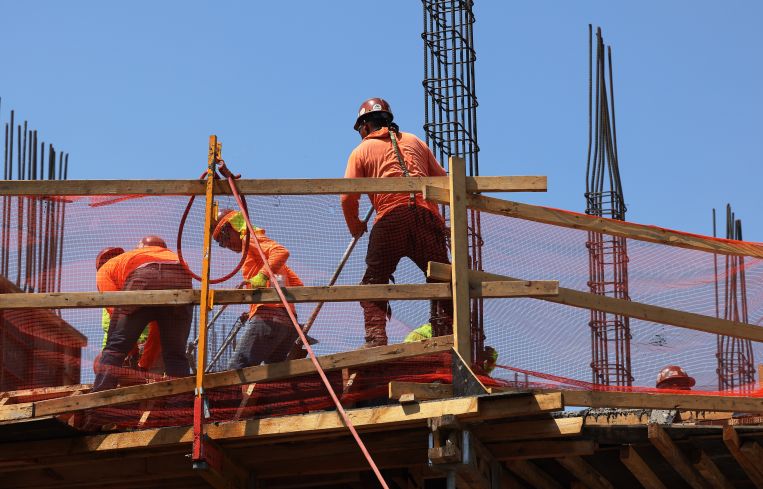2022 Was the Deadliest Year in NYC Construction Since 2019
By Rebecca Baird-Remba April 4, 2023 6:58 pm
reprints
Last year was the deadliest year in New York City construction since the pandemic began, according to a new report from the New York City Department of Buildings released just before two workers were crushed to death in a trench at JFK Airport on Monday.
Eleven construction workers were killed on the job in the five boroughs last year, up from nine deaths in 2021 and eight in 2020, though still lower than 2019’s figure of 14 fatalities, according to the DOB. Similarly, the number of workers injured on job sites in 2022 — 554 — was about 50 more injuries than in 2021 and 2020, but still lower than 2019’s figure of 594 construction site injuries.
Falls continue to be the biggest cause of fatalities and injuries on sites in New York City, accounting for nine of the 11 deaths on job sites last year. Several of these fatal falls occurred on smaller jobs in Brooklyn neighborhoods such as Crown Heights, Greenpoint, Borough Park and Bed-Stuy. There were also two falls in Ridgewood and Kew Gardens, Queens; one in the South Bronx; and two each in the East Village and Upper West Side. DOB noted that site supervisors can help prevent falls by installing guardrails or fall-arrest systems like netting, and also by ensuring that workers use harnesses when necessary.
It was also the busiest year in construction since 2019, with more floor area under construction and more permits issued than in the previous two years. Initial new building permits were up 122 percent from 2021, according to the DOB, with the majority of projects planned in the outer boroughs.
DOB also issued significantly fewer construction safety violations and stop work orders in 2022 than in the two previous years. City inspectors gave out 51,909 safety violations last year, down from 80,640 in 2021 and 68,496 in 2020. There were 9,747 stop work orders last year, down from 10,414 in 2021 and 11,313 in 2020.
The report attributes the decrease to “implementation of initiatives at the department that put more focus on safety education,” including the dissemination of guidance about stop work orders and guardrail regulations. However, DOB has struggled to retain code inspectors over the past few years, and the drop in violations and stop work orders may be related to fewer inspections.
Rebecca Baird-Remba can be reached at rbairdremba@commercialobserver.com.


